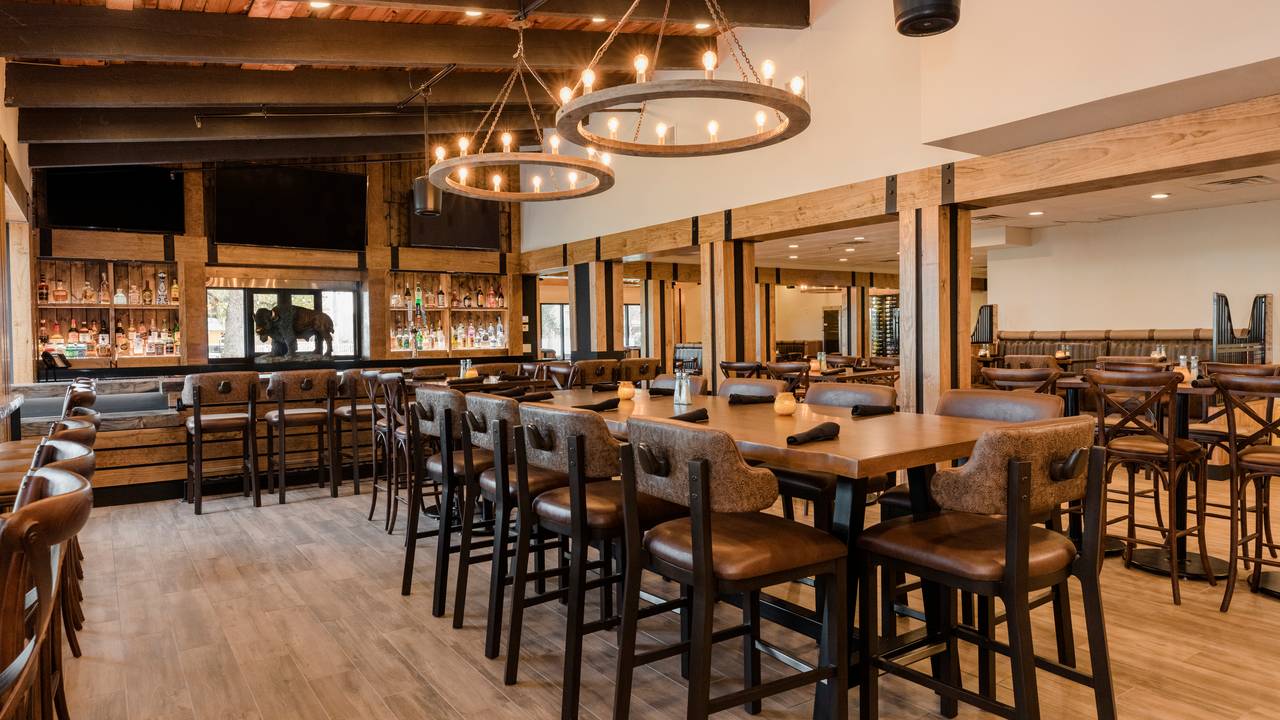A well-planned garden is an inexhaustible source of satisfaction. You need to suppress that desire to put up any coniferous hedges and plant grass in the ‘excess’ space. You must give yourself time to decide things. Step by step.

An empty field, where everything has to be done, can generate as much anxiety as a painter feels when faced with a blank canvas. Where to begin? Avoid the temptation to start acting now. It is true that seeing the space that surrounds the house covered with dirt, rubble and remains of work is depressing, but keep in mind that, no matter how hard it is to do nothing, the first step, absolutely essential to make a garden come true, it is to observe and think.
STEP 1: OBSERVE AND THINK CALM
Look closely at your plot without losing sight of everything that surrounds it. Decide if there are things you don’t want to be seen from your garden. There will be perspectives that you want to enhance and others that you prefer to hide. Among the desirable views, take into account above all those that you want to enjoy from the garden to the outside and those that you will see from the inside of the house towards the garden. Think that you will have the latter throughout the year, even during the months when you do not go out to the garden. Regarding the views to hide, it is as much about how to hide those that are not pleasant, as well as preserving your garden or part of it from other people’s eyes if you think it is necessary.
. Observe the path of the sun and the way in which it affects the different points of the garden throughout the day and in all seasons. Keep in mind, for example, that exposures to the west or north are very shady in winter, yet they receive a very high level of insolation during summer.
. Think about how you want to use your garden. It can be used a lot and become one more room , the green living room, of the house, or conceived only as a kind of decoration to enjoy from the inside or at most when entering and leaving the house. If your love for gardening is important, the use you can give the garden will be different from the two previous cases.
STEP 2: DRAWING A PLAN
Measure the plot. Once you have observed well, know the pros and cons of the terrain and are clear about the use you want to give the garden, it is time to draw a scale plan. To do this, measure the plot well: it is a simple task, unless the plot is uneven or has complicated angles.
- Draw a plan. In the plan, the first thing is to locate the accesses to the plot, to the house or to any other unit integrated in the land on which you are going to work. Nor should you forget to point out the windows facing the garden and the views to and from the outside that you want to avoid.
- Zoning on the plan. Everything is ready now to begin zoning, perhaps the most decisive phase of the project for the success of the garden. It indicates the obligatory steps and the ones that will be used the most; determines the living area (s) and where they will be accessed from the house; decide where you need a screen that creates privacy, or what part of the garden you want to highlight; where you would like to have shade and where is the ideal place for the pool or for sunbathing. If you have small children, locate the area for their games: it should be sunny, seen from the house and, if possible, be away from the entrance.
- Bring the plan to the plot. With the plan finished, go out on the field and try to imagine the location of each area to make sure it is what you want and it will be comfortable for you.
STEP 3: CHOOSE A STYLE
- What style would you like for your garden? It is time to think about what air you want to give your garden, to identify the style that best reflects your personality, adapts to your tastes and is consistent with the decoration of the house. The style not only determines the general appearance of the garden, but also the shape of the spaces and the way in which they relate to each other.
In general, modern styles, very suitable for small spaces, are characterized by the predominance of geometric lines and the simplicity of design, with few elements but very well chosen. They are very functional and easy to maintain, and convey a sense of order that invites you to rest. However, for some people they can be a bit cold.
The rustic styles usually present a studiously unkempt, informal. They also allow you to create very pleasant little gardens, but although it may not seem so at first glance, the degree of dedication they require is greater than modern ones.
The landscape styles, in which the sinuous forms prevail only, work really well in large spaces. They require a lot of dedication, but they are spectacular.
STEP 4: DECIDE THE MATERIALS
Once you have decided on the style, you have to choose the floors of the living areas, the steps and the paths. The degree of use that will be given to them is keys.
- The paving, either on a slab or directly on a sand bed, are very functional and comfortable. If they are on concrete slab, it will be necessary to be very clear about the shape and dimensions, as well as foresee all the passages of water and light, since any subsequent modification is very complicated. The second option is simpler and cheaper and allows the grass to grow between the tiles.
- Wooden pallets are warm, comfortable and clean and do not require as much maintenance as it may seem at first, but they are quite expensive.
- The gravels and gravels, which are very easy to install, allow changes to be made without great difficulties; they are clean, reduce the appearance of weeds and help to keep the soil moist. They offer a lot of flexibility to integrate the plantation. To delimit them, metal sheets or wooden sleepers are usually used. If it is a long road or an area that will be traveled a lot, stone slabs on the gravel will facilitate the passage.
STEP 5: PLAN THE PLANTING
It is the last step. If you have a weakness for a specific plant or group of plants, find them the ideal place to meet their needs for sun, light and water. But, in general, plants should be considered as pieces at the service of all the purposes that you want the garden to fulfill.
- Locate the trees. Calculate the final size, the shape they will have, the shadow they will cast in each season and if this fits what you want; assesses whether once adults they will remove too much light from any room in the house, or the consequences of the development of their roots. It is better to plant a tree with a small crown to let it grow freely, than to choose one whose growth you must control through continuous pruning. If you do not want branches at ground level, better a crown tree than a pyramidal one to prune the low branches. Decide if you want them perennial or deciduous (you’ll have work in the fall).
- Choose the bushes. They contribute strongly to the structure of the garden, since they not only form screens and masses of different sizes and densities, but also provide color throughout the year through their leaves, flowers and berries. Do not forget to take into account the adult size of the plants.
- For the fences you can choose between formal hedges, which you should prune at least twice a year; informal hedges of the same or different shrubs, which can be integrated into the design; or climbing plants, which are the ones that have the least useful space in the garden and in some cases can give you the aroma of their flowers.
- When planning the planting, consider that each type of plant needs a type of irrigation, a very important factor on which the success of the garden will depend. When you know what trees, shrubs, hedges and other plants you want, ask your garden center for advice, as well as on the irrigation installation.
- Pine bark also covers the base of plants well and holds moisture, but it is not as clean as gravel, and must be changed every time.
- Jabra, widely used in parks and walks, is a mixture of crushed granite and clay that is rammed to form a hard surface; its appearance is that of sand. It is easy to sweep and comfortable to walk on, but when it is wet it will make your mark.
- Lawn is not recommended as a surface for areas with a lot of passage, since it suffers a lot from continuous trampling; It is also not recommended in living areas with fixed furniture, such as tables and chairs, because it hinders watering and makes mowing more difficult. If you are planning a meadow, consider sprinkler irrigation beforehand and adapt the size of the meadow to the radius of the spray heads or sprinklers so that it needs as little water as possible. Narrow or irregular areas lead to wasting water, in addition to making the irrigation installation considerably more expensive. If you clearly delineate grass areas with curbs or sleepers that are flush with the ground, you will make mowing much easier since you will not have to trim the edges.
- Upholstery plants are an alternative to grass, but for areas with little trampling.




